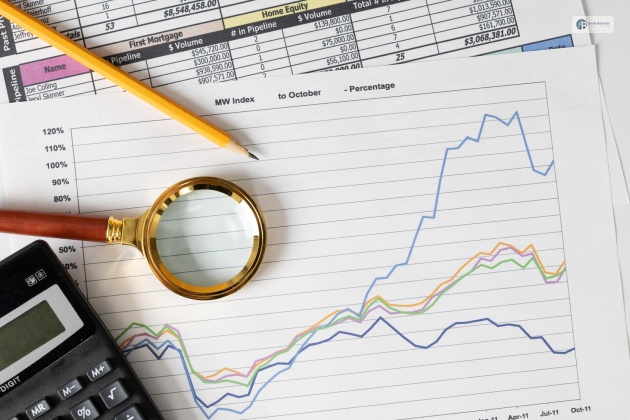Table Of Contents
Unemployment Rate Formula: How To Calculate? Relevance & Uses
Last Updated on: March 2nd, 2024
The unemployment rate is the percentage of the labor force that is without a job. Hence, the unemployment rate formula is calculated by comparing the number of unemployed people with the labor force and multiplying by 100 to find the percentage of unemployed people in a given population. However, this rate is not stable and continuously changes with changes in economic conditions.
In this article, we will learn in detail about how to calculate the unemployment rate formula. However, before that, we will find out some general details about the unemployment rate. Furthermore, we will also discuss the major relevance and uses of the unemployment rate formula. Hence, to find out more, read on through to the end of the article.
What Does The Unemployment Rate Mean?

As already discussed in the introduction, the rate of unemployment is basically the number of people in the labor force that are without a job. It is calculated by comparing the number of people without a job in a given population with the total population. Multiplying it by 100 gives the percentage of the rate of unemployment.
According to Investopedia.com,
“The U.S. unemployment rate is released on the first Friday of every month (with a few exceptions) for the preceding month. The current and past editions of the report are available on the website of the Bureau of Labor Statistics (BLS). Users can generate and download tables showing any of the labor market measures named above for a specified date range.”
The Bureau of Labor and Statistics defines unemployed people as the ones that are willing to work and available for work, and who have actively searched for jobs within the last four weeks. The BLS also says that people with full-time, temporary, or part-time jobs are considered employed. This is true for those who work at least fifteen hours of unpaid work for a farm or family business.
The BLS adjusts the unemployment rate to keep up with predictable variations, like in cases when companies hire extra during holidays. However, the BLS also releases unemployment data based on the unadjusted rate.
The Effect Of The Unemployment Rate In The Economy

As per an article on unemployment by the International Monetary Fund,
“Unemployment is highly dependent on economic activity; in fact, growth and unemployment can be thought of as two sides of the same coin: when economic activity is high, more production happens overall, and more people are needed to produce the higher amount of goods and services.”
This shows that the rate of unemployment depends a lot on the economic activity of a society. When economic activity is low, organizations reduce their workforce, which leads to a rise in the level of unemployment. Hence, you can see here that unemployment is basically countercyclical. That is, it rises with the growth of the economy and lowers with the downfall of the economy.
Unemployment is one of the most important indicators that show the health of an economy. The other indicators are GDP (Gross Domestic Product) and CPI (Consumer Price Index). If the rate of unemployment is high, it inversely affects the stock market and the level of inflation, which further determines the health of the economy.
If the unemployment rate is low, it is due to an increased average wage, mainly due to a lower labor supply. This, in turn, leads to inflation in the economy as companies increase their prices to afford higher costs of labor at the workplace. Low unemployment also causes a rise in stock prices since the workforce has more disposable income.
What Is The Unemployment Rate Formula And How To Calculate?
The following is the Unemployment Rate Formula:
| Rate of Unemployment = (Number of unemployed people/ Labor Force) x 100 |
Here, the ‘labor force’ consists of both employed and unemployed people within the population.
The unemployment rate formula is used to find out the level of unemployment that prevails in the economy. The numerator of the formula shows the number of unemployed people in the economy.
According to Wall Street Mojo,
“Discourage employees, volunteers, and people who don’t have matching skills and are aged and old are generally removed from the unemployed figure calculation and can also be removed from the labor force. The denominator of the equation states the labor force, which is the number of people, whether it is employed or unemployed.”
However, in this case, there can be some rations that are based on the active labor force, which includes only those people who are looking for work in the last four weeks, while at the cost of the exclusion of others.
Hence, when you have these two figures after a survey, you can calculate the rate of unemployment with the help of the formula easily. All you need to do is divide the number of unemployed people by the number of people in the labor force. The lower the size of the unemployment rate, the better it is for the economy.
The Relevance And Uses Of The Unemployment Rate

The rate of unemployment is basically a ‘lagging indicator.’ It means that it rises and falls with the change in the condition of the economy. For example, if unemployment is high, it means that the economic condition of that nation is not good.
On the contrary, if the economy is in good condition and is rising at a steady pace, there is an increased demand for employees. Hence, this lowers the rate of unemployment in the economy, as it tends to fall.
Wrapping Up
Hope this article was helpful for you in understanding how to calculate the unemployment rate formula and the significance of the unemployment rate. It is basically the proportion of the labor force that is not currently employed but has the chance to be.
However, as per the US Bureau of Labor and Statistics, there are different ways of calculating the unemployment rate of a given population. The simplest form of the unemployment rate formula is given in this article. What do you think is the most comprehensive unemployment rate formula? Share your views in the comments section below.
Continue Reading:














